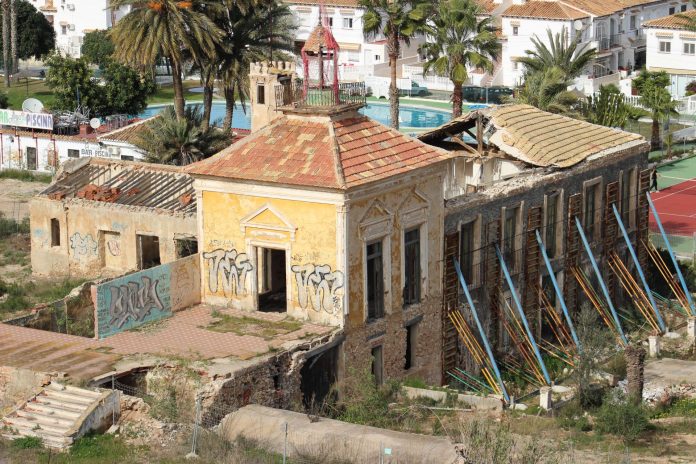
Spanish
Dutch
French
German
Norwegian Bokmål
Polish
Swedish
The once-grand mid-19th-century mansion and dry-farming estate, historically protected under the General Plan, has mostly collapsed, leaving only scattered ruins.
La Casa de los Balcones, built by Orihuela landowners, and overlooking Torrevieja’s pink salt lagoon, has deteriorated significantly over time and now, if the Torrevieja City Council decides to intervene on the privately owned plot, it would involve almost entirely reconstructing the villa once safeguarded by the 1987 PGOU. Today, only remnants remain—mere rubble and a few surviving structures.
The property lends its name to one of Torrevieja’s most well-known residential areas, located south of the city centre, near the salt lagoon. A lone tower precariously stands over what little is left, while the rest of the structure is just a pile of rubble. The City Council has even been unable to compel the property owner to restore the perimeter fence, leaving the site open for anyone to access.
Decay and Neglect
For over a decade, the property has been held up by scaffolding as a symbolic gesture toward conservation efforts. However, these structures now stand without walls to support them. The site contains remnants of a vast cistern and the tower, which, despite its deteriorated state, remains the most visible feature from the CV-95, the main road leading to southern Torrevieja. It also serves as part of the landscape for visitors at the city’s only four-star hotel.
Years of Inaction
Despite decades of political debates, the Torrevieja City Council—regardless of party leadership—has failed to enforce regulations that require property owners to maintain historical buildings, especially those under special protection. The city’s efforts have largely been limited to paperwork, legal claims, and fines, which have done little to prevent the estate’s decline.
Now, with so little left to protect, restoring the property would be more costly than rebuilding it entirely.
Uncertain Future
The latest administrative action against the property owner includes a proposed arrangement in which the City Council would assume part of the estate in exchange for funding its rehabilitation.
This approach, permitted under Valencian law, is notoriously difficult to implement. Meanwhile, the current owner, who has long awaited the building’s loss of historical value, has partially succeeded in securing a court ruling that deems it a ruin.
This could allow them to resell the land without the burden of preservation restrictions—or to pursue the development of a hotel, as permitted by the PGOU zoning regulations.
Spanish
Dutch
French
German
Norwegian Bokmål
Polish
Swedish











